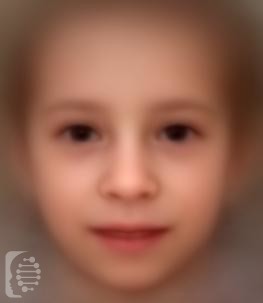What is Bloom syndrome (BLM)?
Bloom syndrome is a very rare genetic disorder characterized by unique facial features.
Other defining features of the syndrome include abnormal growth, a sensitivity to the sun with telangiectasias (dilated small blood vessels on the skin), pigmentation abnormalities, and a predisposition to skin malignancy.
Over ⅓ of the known cases involve individuals of Ashkenazi Jewish descent.
This syndrome is also known as:
BS; BLS: Microcephaly, growth restriction, and increased sister chromatid exchange.
What gene change causes Bloom syndrome (BLM)?
The syndrome is caused by mutations to the gene RECQL3.
It is an autosomal recessive disorder. Autosomal recessive inheritance means an affected individual receives one copy of a mutated gene from each of their parents, giving them two copies of a mutated gene. Parents, who carry only one copy of the gene mutation will not generally show any symptoms but have a 25% chance of passing the copies of the gene mutations onto each of their children.
What are the main symptoms of Bloom syndrome (BLM)?
Individuals with the syndrome experience sensitivity to the sun. This often leads to a permanent, butterfly-shaped patch of reddened skin across the nose and cheeks.
Hyperpigmentation or hypopigmentation may also appear on other parts of the body, including those not exposed to the sun.
Facial and physical characteristics include a long and narrow face, a small lower jaw, and prominent nose and ears. Individuals with the syndrome usually have a high-pitched voice and a very short stature.
Other health conditions include increased risk for diabetes and COPD (Chronic Obstructive Pulmonary Disease), as well as much higher incidences of cancer. Individuals with the syndrome may suffer from more than one type of cancer in the course of their lifetime.
Male sufferers of the syndrome are infertile, and women experience reduced fertility and early menopause.
Possible clinical traits/features:
Hypertrichosis, Short stature, Ichthyosis, Hypopigmented skin patches, Hypoplasia of the zygomatic bone, High pitched voice, Hyperhidrosis, Neoplasm of the gastrointestinal tract, Cognitive impairment, Postnatal growth retardation, Autosomal recessive inheritance, Hand polydactyly, Cutaneous photosensitivity, Protruding ear, Sinusitis, Sacral dimple, Syndactyly, Lymphoma, Narrow face, Micrognathia, Leukemia, Abnormality of chromosome stability, Intellectual disability, mild, Intrauterine growth retardation, Irregular hyperpigmentation, Specific learning disability, Neoplasm of the skin, Short nose, Azoospermia, Abnormality of the pinna, Cafe-au-lait spot, Bronchiectasis, Agenesis of maxillary lateral incisor, Acute leukemia, Chronic lung disease, Dolichocephaly, Diarrhea, Prominent nose, Clinodactyly of the 5th finger, Malar flattening, Delayed skeletal maturation, Cryptorchidism, Decreased circulating total IgM, Decreased circulating IgG level, Decreased circulating IgA level, Decreased fertility in females and infertility in males.
How is it diagnosed?
To find out if someone has a diagnosis of Bloom syndrome (BLM), it is important to have a consultation and evaluation with a clinical genetic specialist. Specialists may also suggest specific genetic testing or other types of tests to help reach a diagnosis. FDNA’s AI technology can help speed up the diagnostic process by analyzing facial features and other health information.


